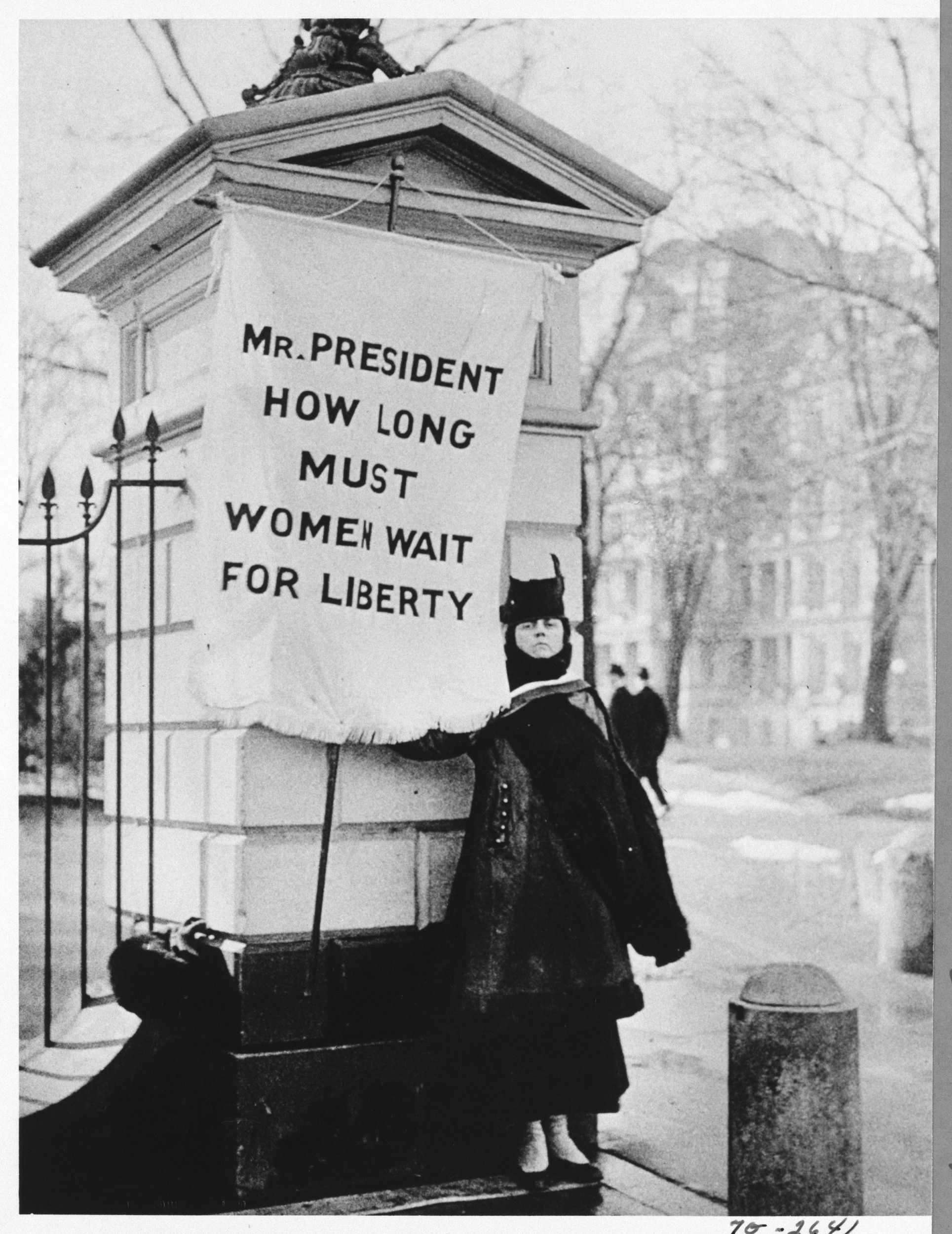Flag Bearer for Women's Rights Standing Near White House
1/30/1917
Add to Favorites:
Add all page(s) of this document to activity:

Frustrated with President Woodrow Wilson’s inaction on woman suffrage, the National Women’s Party (NWP) began picketing in front of the White House to press for voting rights for women; they were the first political activists to do so.
This photograph of "Silent Sentinel" Alison Turnbull Hopkins outside the White House poses the central question of the matter. Her banner reads: "Mr. President How Long Must Women Wait for Liberty."
The NWP began peacefully protesting six days a week in January 1917, but encountered hostile crowds after the United States entered World War I in April. Dozens of women were arrested, many of whom were jailed and force-fed. The resulting publicity and public outcry over their treatment is often credited with compelling President Woodrow Wilson to support woman suffrage.
The protesters demonstrated for nearly 30 months until Congress passed a joint resolution proposing a 19th amendment on June 4, 1919.
This photograph of "Silent Sentinel" Alison Turnbull Hopkins outside the White House poses the central question of the matter. Her banner reads: "Mr. President How Long Must Women Wait for Liberty."
The NWP began peacefully protesting six days a week in January 1917, but encountered hostile crowds after the United States entered World War I in April. Dozens of women were arrested, many of whom were jailed and force-fed. The resulting publicity and public outcry over their treatment is often credited with compelling President Woodrow Wilson to support woman suffrage.
The protesters demonstrated for nearly 30 months until Congress passed a joint resolution proposing a 19th amendment on June 4, 1919.
This primary source comes from the Records of the U.S. Information Agency.
National Archives Identifier: 594266
Full Citation: Photograph 306-N-70-2641; Photograph of Flag Bearer for Women's Rights Standing Near White House; 1/30/1917; Photographs of U.S. and Foreign Personalities, World Events, and American Economic, Social, and Cultural Life, ca. 1953 - ca. 1994; Records of the U.S. Information Agency, Record Group 306; National Archives at College Park, College Park, MD. [Online Version, https://www.docsteach.org/documents/document/flag-bearer-womens-rights, April 25, 2024]Activities that use this document
- Suffrage Photograph Analysis
Created by the National Archives Education Team
Rights: Public Domain, Free of Known Copyright Restrictions. Learn more on our privacy and legal page.



